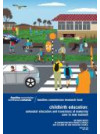This Families Commission report was developed in association with Parents Centres New Zealand Inc and the Parenting Council.
The aim of this report is to help improve and strengthen the quality of childbirth education in New Zealand. It raises critical issues about women’s access to childbirth education, information, and the transition from maternity care to parental support.
Overall under half (41 percent) of all pregnant women attend a childbirth education course with four out of five of them first time mothers. Of all those attending CBE and Well Child services only 10 percent were Māori and less than one in a hundred Pasifika. Many women are unaware of the available services or simply do not use them. They are having to initiate contact with services themselves or are simply falling between the gaps.
Additionally, most women are only vaguely aware of their entitlements - such as how long they can stay in hospital after the birth, how many home visits they can have from their lead maternity carer (LMC) and WellChild services, or that there is free care for urgent pregnancy problems. As a result not all women and their families are receiving good antenatal education and support and there are significant differences in the availability and delivery of childbirth education across DHBs.
Methodology
There were 30 research questions, each of which related to one of 11 project objectives. Data were collected from many sources using a range of methods, including key informant interviews; phone calls to district health boards (DHBs); focus groups with women; a brief questionnaire given out in maternity facilities to women who had just given birth; a brief questionnaire distributed to childbirth education (CBE)a providers; extracting data from the Plunket database; and a comprehensive literature review on the effectiveness of antenatal education
Key Results
The study found that just over 41 percent of pregnant women attended childbirth education in New Zealand. Most of these women were first time mothers, tertiary educated, of New Zealand European ethnicity, and higher income earners. Women less likely to attend were less educated, of lower socio-economic status, and single.
Māori and Pasifika women were significantly underrepresented as recipients of child birth education and there were significant barriers (cultural, transport, childcare, language) to their participation.
Many women were only vaguely aware of their entitlements, such as the allowable length of postnatal hospital stay or the number of free LMC or Well Child home visits they could receive. A number of women reported having difficulties finding a Lead Maternity Carer in their area.
The research found there were significant differences in the availability and delivery of CBE across the DHB regions; and that some health boards do not meet the Ministry of Health expectation of CBE services being available free of charge to 30 percent of all pregnant women each year. Further, not all providers base their courses on national service specifications; there were differences between what topics providers covered, the length and structure of their courses, and the training of facilitators.
In some regions there were problems with referring mothers on to other providers (LMC to childbirth education and LMC to Well Child services). This resulted in many women being unaware of the available services, having to initiate contact with the services themselves, or falling through the gap during the transition process.
There were many women happy with the services provided and the support and information they received. Nevertheless, the Families Commission believes the gaps and issues identified need to be addressed.

